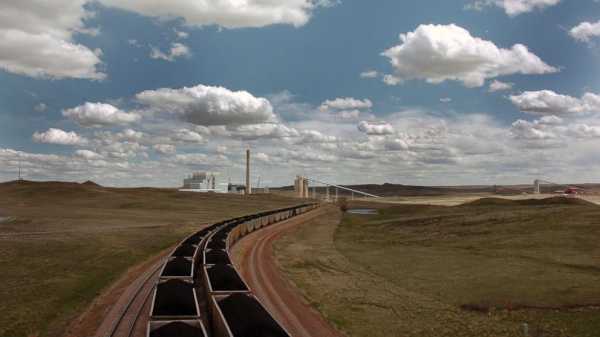
At the international competition in the $20 million profitable products from the gases, which would otherwise contribute to global warming has entered its final stretch.
The 10 finalists of a competition sponsored by the American energy company and a group of canadian oil Sands producers have shown in the laboratory that they can use carbon dioxide from power plants to potentially make a profit, doing everything from concrete, methanol, alcohol that is used in several products.
The finalists announced Monday are from India, China, Scotland, Canada and the United States is to collect a $ 5 million prize, or $500,000 apiece.
The team will also get a chance to implement their ideas, using large amounts of CO2 obtained from the actual emissions of power plants. 1 metric ton of CO2 that they will have to use every day 10 times more than they were supposed to demonstrate in the laboratory.
A ton is only about 1 percent of the daily output of power station CO2. But competition is more inspiring than an immediate solution to the problem of climate change, said Marcius Extavour, senior Director of energy and resources for the Foundation XPRIZE competition organization.
“It’s about opening people’s minds and really shows what is possible,” Extavour said.
Five finalists will compete to use the actual flue gas from Wyoming coal power plants. The other five will compete in gas-fired power plants in Alberta, Canada.
Starting this summer, they will have a year of practice on plants before collecting data for the competition begins. Two winners, one for each territory, each to collect the top prize- $ 7.5 million.
Chemistry is why the competition has two tracks. The concentration of carbon dioxide in the Wyoming integrated test center, a new research center on dry fork station coal-fired power plant near Gillette, about twice Alberta’s carbon conversion Technology centre, a new research center at the Shepard energy Centre natural gas power plant in calgary, Alberta.
The 10 finalists scored the highest among 20 semifinalists on how much CO2 they could use, as well as the value of their products. The manufacture of concrete, for example, high scores on the volume, not the cost of the product, with relatively small amounts of costly evaluation of a carbon fiber low in volume but high in value.
The finalists C2CNT, the team from Ashburn, Virginia, making carbon nanotubes, and CarbonCure, Dartmouth, Nova Scotia, Canada, which already uses carbon dioxide on an industrial scale for the chemical to create the limestone in the concrete.
CarbonCure works with almost 100 concrete plants in the United States and Canada, but also receives CO2 from various sources, says Jennifer Wagner, the team leader XPRIZE CarbonCure.
“We know the technology works. We know that there are environmental benefits and economic benefits for concrete producers,” said Wagner. “What we have to show for the purposes of the XPRIZE is that technology can score the highest.”
Besides saving concrete manufacturers of money, the process can lead to a reduction in demand for cement from plants, which are responsible for up to 5 percent of global CO2 emissions, she said.
The contest is sponsored by NRG Energy and the canadian oil Sands innovation Alliance. XPRIZE is the organizer of technological innovation competitions, including one that is awarded for the first private organization to launch a manned spacecraft into space twice within two weeks 10 million dollars.
—
Follow Mead Gruver in https://twitter.com/meadgruver
Sourse: abcnews.go.com






